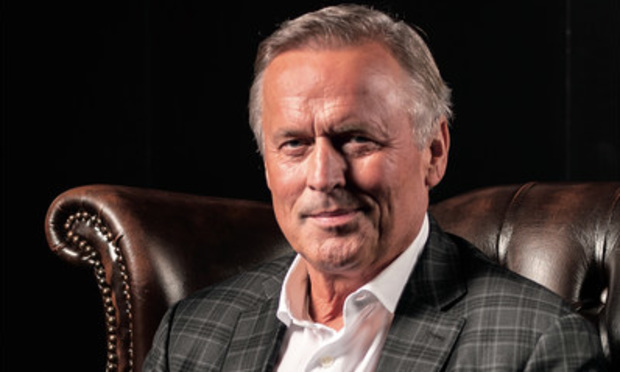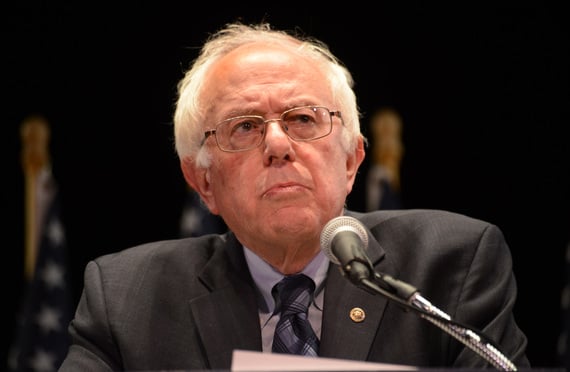 John Grisham. (Photo: Charlotte Graham)
John Grisham. (Photo: Charlotte Graham)
|
Duke Russell has spent nine years on Alabama's death row. Hecame within an hour of being executed. An appeals court granted astay while he was eating his last meal. Russell maintains hisinnocence and has fought strenuously to be exonerated.
|Quincy Miller has been behind bars in Florida for 22 years formurder. One holdout juror spared him from the death penalty. Milleralso claims his innocence and has battled for his freedom.
|These are harrowing tales. But neither is real. They come frombest-selling author John Grisham and exist on the pages of "TheGuardians," his latest work of fiction.
|In this just-released title, currently No. 1 on The NewYork Times bestseller list for fiction, Grisham, 64,tackles the subject of wrongful convictions. He has a lot to sayabout how the system got the wrong guys in these cases. But facinga socially charged topic, he was careful how he went about it.
|"In popular fiction you better stay off the soapbox," Grishamtells me over breakfast at a Midtown Manhattan hotel. "That's notmy role."
|Seeking to undo Russell and Miller's miscarriages is theirlawyer, Cullen Post, a burned-out former public defender turnedpriest now working for a hardscrabble nonprofit law firm, whotravels the country seeking to exonerate those wrongfully behindbars. In "Post," Grisham pays tribute to Jim McCloskey, a priestand near 40-year veteran of the innocence movement, whose work hasled to 63 men and woman being exonerated for crimes that they didnot commit.
| In "The Guardians," Grishamexplores why the innocent are sometimes found guilty, such as byplanted evidence, fabricated testimony and jailhouse snitches. Heplaces particularly sharp focus on prosecutors' use of scientificevidence with dubious reliability.
In "The Guardians," Grishamexplores why the innocent are sometimes found guilty, such as byplanted evidence, fabricated testimony and jailhouse snitches. Heplaces particularly sharp focus on prosecutors' use of scientificevidence with dubious reliability.
But to stay off the soapbox, Grisham tells me that he lets "thestory make the points." In doing so, he finds inspiration in casesthat have troubled him.
|For Miller, his fate was sealed by a flashlight found in thetrunk of his car, containing tiny specs of blood on the lens.Miller's story comes from the real-life case of Joe Bryan, who hasbeen behind bars in Texas for 30 years for murdering his wife. LikeMiller, the strongest evidence linking Bryan to his crime was ablood-specked flashlight discovered in the trunk of his car.
|In both cases, prosecutors used purported experts inbloodstain-pattern analysis to testify that the blood wasindicative of a close-range shooting. However, the experts hadvirtually no training on the subject. Grisham calls the expert'stestimony in Bryan's case "overreaching, speculative and not basedon science."
|Last year, the Texas Forensic Science Commission—created by theTexas Legislature—concluded that the blood-spatter analysis used toconvict Bryan was "not accurate or scientifically supported." Thecommission also concluded that the expert who testified againstBryan was "entirely wrong." That expert has himself stated in anaffidavit that his conclusions were wrong.
|Grisham's character Duke Russell landed on death row after apurported expert in bite mark analysis testified that Russell'steeth were the source of three nicks on the arm of his victim.Grisham found inspiration in the Mississippi case of KennedyBrewer, a man sentenced to death for rape and murder. Brewer wasconvicted based on bite mark evidence and then exonerated—afterseven years on death row—when the real killer was identifiedthrough DNA.
|According to the National Academy of Sciences looking at thesubject, in numerous instances experts, have disagreed in theirevaluations of the same bite marks. Cases abound of individualsconvicted based on bite-mark evidence and later proven innocentthrough DNA.
|Character Quincy Miller also owes his conviction to a jailhouseinformant, which Grisham calls "a huge problem" leading to wrongfulconvictions. He describes a practice of the police giving anotherprisoner, looking for leniency for himself, the facts of the crimeand putting him in a cell with the suspect. "And sure enough,"Grisham explains, "two days later, the snitch pops out and says,'Oh, he bragged about killing his wife. He beat her to death with aclaw hammer.'"
|This tactic works, Grisham says, because "jurors cannot believethat a guy will clean up, coat and tie, hide his tattoos" and then"swear to tell the truth and just tell a total fictional story.They can't believe that. And so they believe him."
|In 2018, The Innocence Project, a nonprofit organization workingto exonerate the wrongfully convicted—Grisham serves on theboard—secured freedom for nine individuals, the most in theorganization's 26-year history. They are very difficult cases towin, Grisham says, because "they fight you."
|He points to the case of Karl Fontenot, who was convicted ofmurder in Oklahoma in 1985 and is serving life in prison. In lateAugust, an Oklahoma federal court in a 190-page opinion concludedthat Fontenot established the "actual innocence" necessary to pavethe way for his release from prison. But the state of Oklahomaappealed the judge's decision to the federal court of appeals."That'll burn another year or two," Grisham says, in disbelief."He's been there 35 years. They're trying to get him out, but it'sso frustrating."
|Despite these challenges, Grisham says that, because of recentexonerations by DNA evidence, sometimes "a judge will ask theprosecutor, 'Why are you afraid of DNA testing? Why are youfighting DNA testing?'"
|Grisham lays the blame for some wrongful convictions at the feetof corrupt prosecutors. He rails against a system that he says doesnot hold them accountable. He saw hope last year after New Yorkcreated an 11-member Commission on Prosecutorial Misconduct toinvestigate the conduct, qualifications and fitness ofprosecutors.
|But the law has yet to go into effect. It is being challenged incourt by various New York district attorneys on all manner ofarguments based on constitutional infirmities.
|Grisham shows his emotion when discussing the stalled law. "Youknow, it's so frustrating when you watch some of these prosecutorsand the way they cover up their mistakes," he says. "New York hadthe guts to at least pass the law. Nobody else has done that." Headds, "Why do prosecutors fight something that's good law? Theyhave this mentality to fight every effort that we make to hold themaccountable."
|Grisham says he has often wondered what would happen if it wereconclusively established that an innocent person had been executed.He tackled this question in his 2010 thriller "The Confession." Buthe may soon get an answer in real life. In October, a Tennesseecourt heard arguments from April Alley, seeking to have DNA from acrime scene tested in an attempt to prove the innocence of herfather, Sedley Alley, who was executed in 2006 for rape andmurder.
|Grisham thinks he knows the answer: "If they prove they killedthe wrong guy, they're not going to change their laws. They're notgoing to abolish the death penalty."
|The subject of wrongful convictions is not a new one forGrisham. In 2004, he saw an obituary for Ronald KeithWilliamson, who had died in Oklahoma. It included a picture ofWilliamson, five years earlier, being released from prison, afterDNA evidence cleared him of murder. Grisham says he asked himself"how is a white guy, my age, in Oklahoma on death row, who camewithin five days of being executed, completelyinnocent?" He also learned that Williamson was a secondround draft pick of the Oakland A's in 1971.
|"It was a great story," Grisham tells me. "I'm always drawn tostories." This led to him getting into the subject "big time." Twoyears later he published "The Innocent Man," his only work ofnonfiction, in which he tells of Williamson's saga. "It's become a15-year journey now."
|As an author drawn to stories, Grisham is in fertile territorywith his interest in wrongful convictions. Stories are what "drivethe entire innocence movement," he tells me, "because the storiesare so real and so loaded with human suffering."
||
Randy Maniloff is an attorney at White andWilliams in Philadelphia and an adjunct professor at TempleUniversity Beasley School of Law.
Complete your profile to continue reading and get FREE access to BenefitsPRO, part of your ALM digital membership.
Your access to unlimited BenefitsPRO content isn’t changing.
Once you are an ALM digital member, you’ll receive:
- Critical BenefitsPRO information including cutting edge post-reform success strategies, access to educational webcasts and videos, resources from industry leaders, and informative Newsletters.
- Exclusive discounts on ALM, BenefitsPRO magazine and BenefitsPRO.com events
- Access to other award-winning ALM websites including ThinkAdvisor.com and Law.com
Already have an account? Sign In
© 2024 ALM Global, LLC, All Rights Reserved. Request academic re-use from www.copyright.com. All other uses, submit a request to [email protected]. For more information visit Asset & Logo Licensing.








